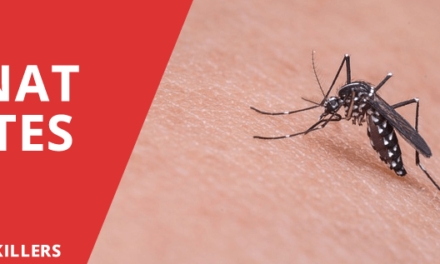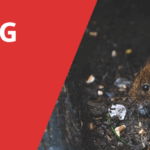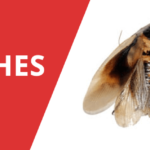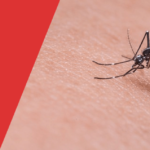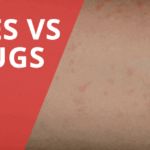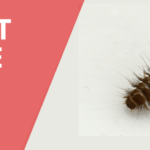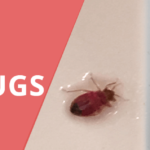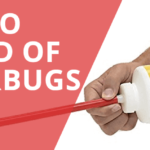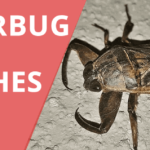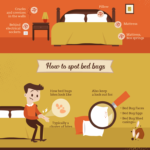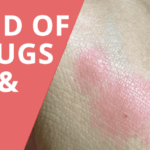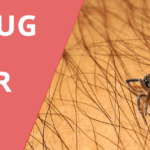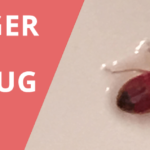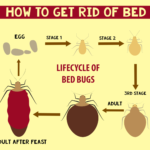How can you identify Chigger bites vs Bed bug bites?
Chiggers, (also called berry bugs) aren’t actually insects. Instead, they belong to the mite family, and they are closely related to spiders and ticks. However, their bites look similar to bed bugs.

How can you identify chiggers?
Although they aren’t ticks, these larval mites are quite small and measure around 0.15mm to 0.25mm in length. They are reddish-orange to red in color and have six legs. The preferred habitat for chiggers is grassy areas and thick, scrub-type vegetation where there is undisturbed soil so that chiggers can easily latch onto the hosts that pass by.
However, generally, chiggers are found in rural areas that are less disturbed, and they can persist for many years.
What do chiggers feed on?
Similar to dust mites, chiggers feed on animals’ skin cells. The parasitic larva feeds on various creatures which also includes quail, box turtles, toads, rabbits, humans, along with a few insects too.
Once they crawl on the hosts, they release digestive enzymes into the host’s skin which breaks down the skin cells. Instead of a bite, chiggers make a hole in the skin which is called a stylostome. Then, they chew small parts of the inner skin which leads to swelling and irritation.
How do chiggers reproduce?
Adult male chiggers move around their habitat and leave behind tiny capsules of sperm which are called spermatophores. The adult female chiggers find the capsules and insert them into the genital pore.
After around fourteen days of the egg fertilizing, the female then leaves the fertilized egg on the surface of the soil.
Identifying bed bugs
 On the other hand, bed bugs are reddish brown in color, and they have a flat, oval shape. They measure around 4mm to 5mm in length and are around the size of an apple seed. Once they have a blood meal, bed bugs become reddish and swollen.
On the other hand, bed bugs are reddish brown in color, and they have a flat, oval shape. They measure around 4mm to 5mm in length and are around the size of an apple seed. Once they have a blood meal, bed bugs become reddish and swollen.
How does infestation take place?
They are generally found in small crevices and cracks. They can also be found in furniture, sheets, and mattress seams. Other common hiding places also include behind picture frames, electrical outlet plates, and baseboards.
The most common place that bed bugs can be found in is hotels as they can travel from one room to the other in the visitors’ luggage or personal belongings like briefcases and purses.
Where do bed bugs hide?
As mentioned earlier, bed bugs can enter your house without being detected via used couches and beds, clothing, and luggage, among other items. Since they have a flat body, fitting into small places is possible for them. Bed bugs can even hide in places as thin as the width of a regular credit card.
While bed bugs don’t have nests like bees and ants do, they still tend to live in groups.
Initially, bed bugs hide in places like headboards, bed frames, box springs, mattresses, and other similar places from where they can have easy access for biting people in the night. However, with time, the bed bugs can scatter throughout the room and can move into other locations.
They can also spread to nearby rooms and apartments. Since bed bugs survive only on blood, having bed bugs in your house doesn’t mean say anything about your hygiene. The possibility of having bed bugs in clean, immaculate homes is the same as in dirty ones.
Bed bug’s reproduction cycle

Female bed bugs can deposit one to five eggs in a single day. In their lifetime, females might lay, on average, around 200 to 500 eggs. With sufficient food supply and a regular room temperature, then they can survive for more than 300 days.
Preferred habitat for bed bugs
As apparent by the name, bed bugs prefer to live in warm beds. However, their habitats can also include car and bus seats, backpacks, couches, and clothes.
Chigger Bugs | Bed Bugs |
|
|---|---|---|
| Bite Duration | A week (severe bits can last up to 15 days) | A week (up to three weeks in overly sensitive skin) |
| Remedy | Anti-itch cream, cold compress, antihistamine | Anti-itch cream, cold compress, antihistamine |
| Symptoms | Itchiness | Itchiness |
| Bites | Red welts (typically over legs). Can also resemble a pimple or blister. | Small raised bumps, in a zigzag pattern, surrounded by hives or blisters (typically over all extremities) |
Chigger bites vs bed bug bites – The Difference
Distinguishing between bed bug bites and chigger bites can be a little tricky; however, there are some clues you can look for to figure out which of the two bit you.
Often, bed bug bites and chigger bites look almost the same. Both of them produce small, reddened areas that are usually swollen. The area might also be raised slightly because of inflammation.
Both bites are also quite itchy which means that you can’t judge the bite based on the itchiness level. You must make sure, however, that you don’t pick at the bite; otherwise, it will get much worse.
One way you can identify the bite is to look for the bug. You will be able to see the bed bugs under the mattress and on your body. Chiggers are extremely small and you might not even be able to see them.
Since, more often than not, chiggers are brought in from the outside via legs there is a high chance that the bites on your legs are chigger bites. Chigger bites can also be on the groin, ankles, and feet.
On the other hand, bed bugs bite all of the extremities. Thus, it is better to note when the bites appeared first and where so that you have a better idea of the bug you are dealing with.
The best way of identifying the bug is to look at the biting pattern. While bed bugs tend to bite in a straight line, chiggers bite randomly.
Symptoms: chigger bites vs bed bug bites
Both chigger and bed bug bites bring along different symptoms and side effects.
Symptoms of chigger bites

The symptoms of chigger bites appear right after the enzyme is injected into the skin. Remember that a chigger bite itself is hardly noticeable. The most common symptoms include a flat or raised red colored bump on the skin or a skin bump that resembles a pimple or blister accompanied with itching that can be quite intense.
The primary symptom is itching, this is most intense after two days of being bitten. The itchiness can last for a number of days and the bitten area can take up to even 15 days to return to its normal appearance.
In the majority of the cases, the symptoms occur almost immediately after the chigger bites; however, they can start to progress or develop in the days following the bite. If there is no further irritation, then the symptoms usually go away after just a week.
There are also many cases where people don’t feel the bite, or they don’t experience any symptoms apart from the minuscule dots where the bug bit along with some minor irritation and inflammation.
Meanwhile, a few people are hypersensitive to bites and can develop severe symptoms as well.
Since a condition which is characterized by itching can cause extreme scratching, the person can experience disruption of the skin. As a result, there is a possibility of a secondary bacterial skin infection.
Symptoms of a bed bug bite

Almost all bed bug bites cause a degree of discomfort along with inflammation and itchiness. Other symptoms that bed bug bites lead to include a painful, burning sensation, an itchy, raised bump that has a clear center, or an itchy bump with a dark center but light surrounding areas that are often swollen.
Symptoms can also be small red welts or bumps in a line or a zigzag pattern, and small bumps surrounded by hives or blisters.
In some rare cases, some people experience severe symptoms or reactions after being bitten by a bed bug. These symptoms can include difficulty in breathing, an irregular heartbeat, swollen tongue, blisters, and nausea. Such individuals require immediate medical attention.
Remedies
Both of the bites being discussed are to be treated differently and here is what you can do to reduce the swelling.
Preventions
Chigger bites vs bed bug bites – Conclusion
While it’s difficult to distinguish a chigger bite from a bed bug bite, there are some signs (mentioned above) that can help you figure it out, if inspected closely.
While both bites appear the same, the differences lie in the biting pattern and the symptoms one experiences after the bite.
Make sure you take all the necessary measures to stay protected from both Bed bugs and Chiggers!




